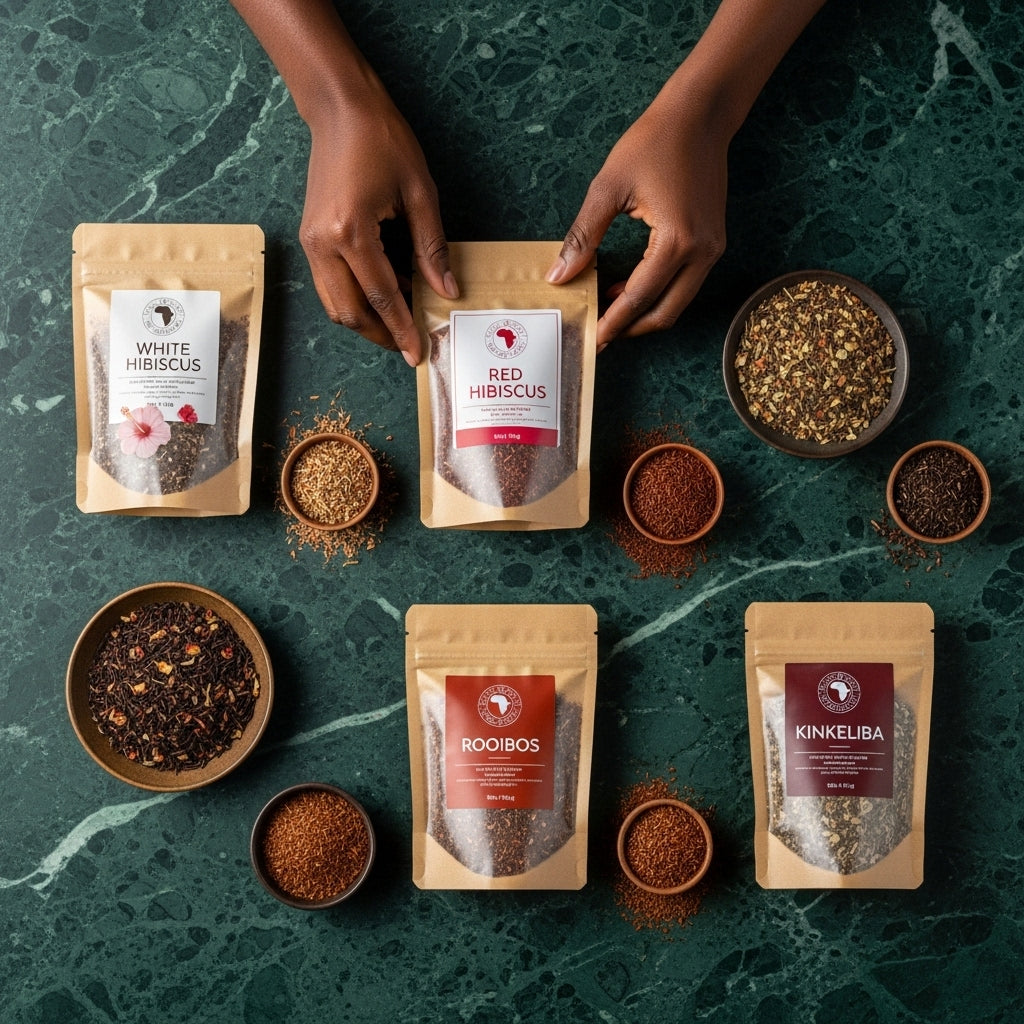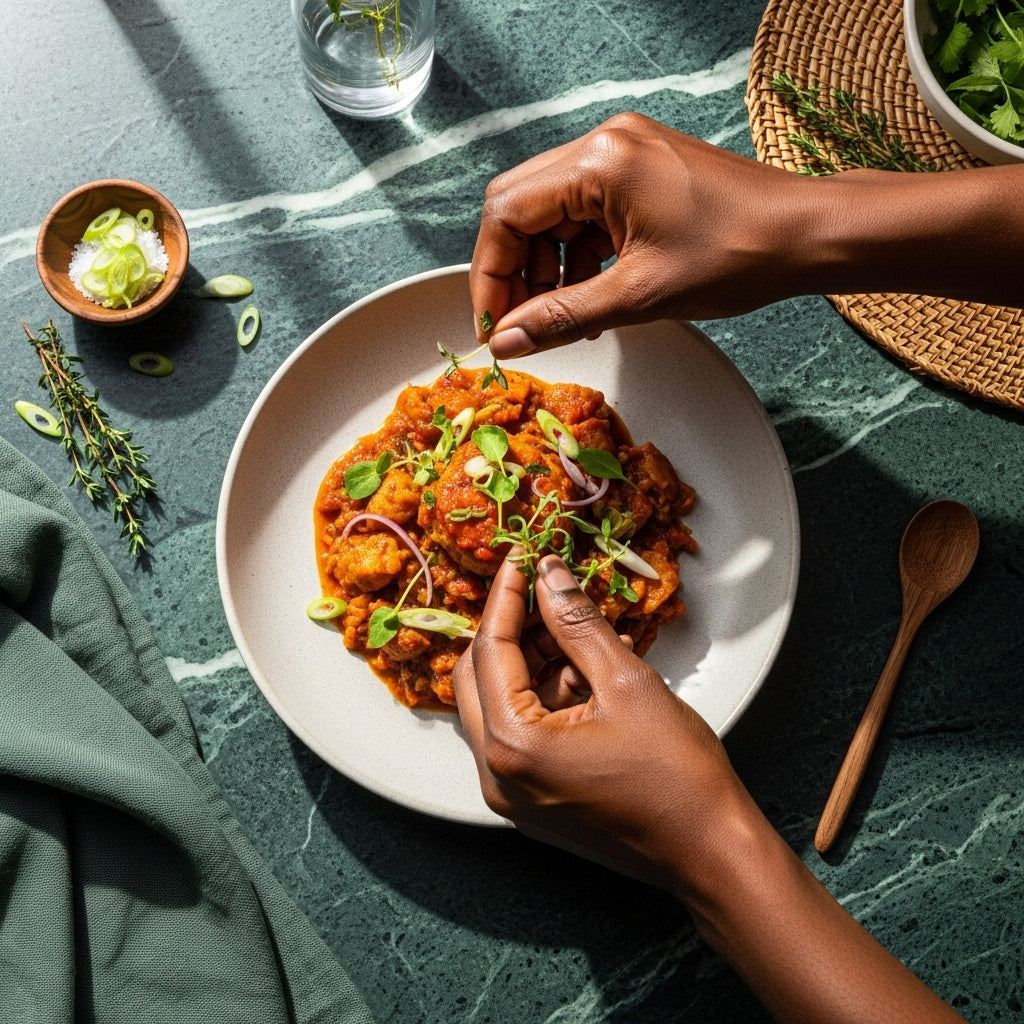
What is bobolo? Discover this traditional Cameroonian dish
Bobolo is a Cameroonian culinary specialty, widely enjoyed in several regions of the country. This dish is made from fermented cassava, which gives it a unique texture and a slightly sour taste. Its preparation involves pounding the cassava root, then fermenting it before transforming it into a flatbread or sausage. Very often, bobolo is wrapped in banana leaves, which allows it to retain its flavor during steaming.
Bobolo accompaniments
Bobolo is usually eaten with a variety of sauces that enhance its flavor. Some of the most popular sauces include:
- Peanut sauce
- Braised fish
- Tomato sauce These side dishes make bobolo a complete dish, ideal for meals with family or friends. This traditional dish is particularly popular at parties and gatherings, symbolizing conviviality and sharing.
Regional variations
The preparation of bobolo can vary across Cameroon, allowing each community to add its own unique touch. Some regions, for example, may add spices or local ingredients to enrich the flavor. This diversity in bobolo preparation highlights the richness of Cameroon's culinary tradition and the importance of this dish within the local culture.
The Origins of Bobolo: History and Cultural Importance in Cameroon
Preparing bobolo for special occasions
Bobolo, made from fermented cassava, is more than just a dish. This dish is traditionally prepared for special occasions such as weddings, festivals, and community ceremonies. During these events, preparing bobolo becomes a moment of conviviality. Families gather to work together, strengthening bonds between community members. The rituals surrounding its preparation demonstrate the importance of this dish in Cameroonian culture.
A symbol of solidarity and sharing
Bobolo symbolizes solidarity and sharing within communities. By serving it at events, hosts demonstrate their generosity toward their guests. This dish is shared around the table, strengthening the spirit of unity. Moments spent together enjoying bobolo create memories. Thus, bobolo plays a vital role in strengthening interpersonal and community relationships in Cameroon.
Pair with various sauces
Bobolo is often accompanied by a variety of sauces, enriching its flavor and diversity. It is typically served with fish, meat, or vegetable sauces. These accompaniments add distinct flavors and make each meal unique. Today, bobolo is an integral part of Cameroon's culinary identity. It is celebrated both at home and abroad, allowing Cameroonians to share their culture through this iconic dish.
Essential ingredients for preparing authentic bobolo
Main ingredients: Fresh cassava
To prepare an authentic bobolo, the basic ingredient is fresh cassava. This tuber is essential because it provides the dish's characteristic texture and flavor. Cassava must be carefully peeled and washed before use. Once prepared, it is boiled until tender, which makes it easier to mash. Using fresh cassava ensures a more flavorful and authentic bobolo.
Seasonings and side dishes
To enhance the flavor of bobolo, it's important to add seasonings such as salt and some spices. These elements enhance the taste of cassava. As for side dishes, bobolo is often served with peanut soup or sauce. This combination creates a balanced and delicious dish that is enjoyed by all. Sauces may vary by region, but their richness always complements the taste of bobolo.
Cooking utensils and times
To properly prepare bobolo, you'll need a mortar and pestle or a blender. These utensils allow you to thoroughly crush the cassava, ensuring a smooth paste. Bobolo takes approximately 30 to 45 minutes to cook. This cooking time is what allows you to achieve the perfect texture—neither too soft nor too firm. Once cooked, bobolo is ready to enjoy, often accompanied by your chosen sauce.
Key steps in preparing bobolo: from fermentation to cooking
Selection of ingredients
To make a quality bobolo, it's crucial to choose fresh cassava tubers. The quality of the cassava will influence the taste and texture of the final dish. It's recommended to choose firm cassavas, free of blemishes and signs of decay. These tubers will serve as the base for preparing the bobolo.
Fermentation
Once the cassava tubers have been selected, fermentation is a key step. The cassava must be left to ferment for 2 to 3 days. This fermentation helps develop the unique flavors and improves the digestibility of the cassava. During this period, natural fermentation occurs, giving the bobolo a depth of flavor.
Looting and shaping
After fermentation, the cassava is ready for the mashing phase. The fermented cassava must be crushed to obtain a smooth paste. This step is essential to ensure that the dough does not contain any lumps. Next, the cassava is shaped into rolls or flatbreads, depending on your preference. The shaping also affects how the bobolo will be cooked.
Cooking and serving
Finally, the bobolo should be wrapped in banana leaves and steamed for about 1 hour. This allows the bobolo to take on a firm and soft texture. When serving, it is common to accompany the bobolo with sauces or vegetables to make it a complete and tasty meal.
Regional variations of bobolo across Cameroon
Regional preparations
Bobolo is an iconic dish that varies across Cameroon's regions. Each region uses local ingredients, giving it a unique flavor. For example, in the Littoral region, bobolo is often served with grilled fish. This combination creates a delicious taste experience that delights the taste buds.
Spices and flavors
In the Northwest, locals frequently add local spices. These spices enhance the flavor of bobolo, making it even more appealing. Recipes may include chili peppers, salt, and other aromatic herbs. Thus, bobolo becomes more than just a side dish; it transforms into a dish rich in flavor.
Cooking techniques
Cooking methods for bobolo also vary across the country. Some regions prefer to wrap the dish in banana leaves. Others adopt more modern techniques, such as steaming in metal pans. Each cooking method contributes to the regional identity of bobolo, enriching Cameroonian culinary culture.
Bobolo in African gastronomy: similar dishes and alternatives
Comparison with fufu
Bobolo is often compared to fufu, a cassava-based dish popular in West Africa. Like bobolo, fufu is made from cassava root, but it is distinguished by its smoother texture. Preparing fufu involves pounding boiled cassava until smooth. While bobolo is steamed in banana leaves, fufu is usually shaped by hand and served warm.
Miondo: a Central African alternative
In Central Africa, miondo is a dish that shares similarities with bobolo. Prepared from cassava leaves, miondo is also steamed, giving it a soft texture. Like bobolo, miondo is often served with various sauces, providing a rich and flavorful culinary experience. These two dishes demonstrate the importance of cassava in the region's gastronomy.
Bobolo variations and accompaniments
Bobolo is distinguished by its firm texture and unique cooking method. However, there are regional variations, such as corn bobolo, which is popular in some communities. This dish can be accompanied by various sauces, such as peanut sauce, tomato sauce, or fish sauces. These accompaniments showcase the diversity of African cuisines and enrich the dining experience around bobolo.
Nutritional benefits and calorie intake of bobolo
Rich in complex carbohydrates
Bobolo is a food rich in complex carbohydrates. These carbohydrates provide a sustained source of energy for the body. Unlike simple carbohydrates, which cause blood sugar spikes, the carbohydrates in bobolo are digested slowly. This helps maintain stable energy levels throughout the day, which is particularly beneficial for active people.
Dietary fiber and digestion
In addition to its carbohydrates, bobolo contains dietary fiber. This fiber is essential for proper digestion. It facilitates intestinal transit and prevents constipation. Furthermore, a high fiber intake can contribute to better weight control, as it provides a feeling of satiety. Thus, bobolo becomes an ally in a balanced diet.
Low in fat and essential nutrients
Bobolo is low in fat, making it ideal for those looking to maintain a balanced diet. It's also rich in essential vitamins and minerals. Eating it promotes overall health. With its moderate calorie intake, bobolo allows for guilt-free indulgence. As such, it can easily be incorporated into various diets.
Tips and techniques for making your own homemade bobolo
Choosing the right cassava leaves
To prepare quality homemade bobolo, it's essential to choose fresh cassava leaves. These leaves will give your dish optimal flavor and a perfect texture. Before using them, be sure to wash them thoroughly. This removes impurities and residue. Once cleaned, boil them for a few minutes to soften them. This step is crucial for obtaining a smooth and homogeneous paste.
Knead the dough carefully
After boiling the leaves, mash them thoroughly to form a paste. It is recommended to use hot water for this process. Hot water makes mixing easier and improves the consistency of the paste. For a personal touch, feel free to incorporate spices or herbs according to your preferences. This will add a unique flavor to your bobolo, making each bite even more delicious.
Let stand and serve
Once the bobolo is steamed, let it rest for a few minutes. This allows the dish to firm up. Then, serve it with a sauce or side dish of your choice for a complete meal. Sauces made with braised fish or vegetables are particularly recommended. Bobolo pairs well with many dishes, making it a staple of Cameroonian cuisine.
Where can I find authentic ingredients to make bobolo?
Essential ingredients for bobolo
To prepare a good bobolo, you must first source authentic ingredients. The main ingredient is, of course, cassava. This tuber is the basis of this traditional Cameroonian dish. In addition to cassava, you'll need leaves to wrap it in during cooking. Other ingredients may include accompanying sauces, which you can choose according to your preferences.
Where to buy quality cassava
To get your ingredients, go to your favorite exotic store nkosiagro.com!
Storage and consumption of bobolo: practical advice
Conservation of the bobolo
To store bobolo, place it in a cool, dry place. This helps preserve its texture and flavor. Avoid humid areas, as moisture can deteriorate the dish. If you buy packaged bobolo, be sure to reseal the package tightly after each use to maximize its shelf life.
Reheating the bobolo
Before serving, it's important to reheat the bobolo properly. The best method is to steam it. This helps restore its softness. Avoid microwaves, as they can make the bobolo rubbery. Steaming ensures that the dish retains all of its original flavor and texture.
Bobolo accompaniments
Bobolo pairs perfectly with spicy sauces or meats to enhance the flavor. Here are some side dish suggestions:
- Spicy sauces : peanut sauce, spicy tomato sauce.
- Meats : braised fish, beef in sauce.
It is recommended to consume bobolo quickly after opening to avoid spoilage. This ensures an optimal dining experience.
What is bobolo?
Bobolo is a Cameroonian culinary specialty made from fermented cassava, with a unique texture and a slightly acidic taste.
How is bobolo prepared?
Bobolo is prepared by pounding cassava root, then fermenting it before forming it into a flatbread or sausage. It is often wrapped in banana leaves for steaming.
What is bobolo eaten with?
Bobolo is usually accompanied by various sauces such as peanut sauce, braised fish or tomato sauce, making it a complete dish.
Are there regional variations in the preparation of bobolo?
Yes, the preparation of bobolo varies across Cameroon, with each community adding spices or local ingredients to enrich the taste.
Why is bobolo prepared on special occasions?
Bobolo is traditionally prepared on special occasions such as weddings and community ceremonies, promoting conviviality and sharing among members of the community.
What is the role of bobolo in Cameroonian culture?
The bobolo symbolizes solidarity and sharing, strengthening interpersonal and community relationships during meals.
What ingredients are needed to make bobolo?
The main ingredient for authentic bobolo is fresh cassava. Other ingredients include leaves for wrapping and sauces for accompaniment.
How does cassava fermentation for bobolo work?
Cassava should be left to ferment for 2 to 3 days to develop unique flavors and improve its digestibility.
What utensils are needed to prepare bobolo?
A mortar or blender is needed to crush the cassava into a smooth paste.
How long does it take to cook bobolo?
Bobolo takes about 30 to 45 minutes to cook, followed by steaming for about 1 hour.
Where can I buy quality cassava?
Quality cassava can be purchased on sites like nkosiagro.com, which specializes in African products.
How to store bobolo?
To store the bobolo, it should be placed in a cool, dry place, and the packaging should be tightly closed after each use.
What is the best method for reheating bobolo?
Bobolo should be steamed to regain its soft texture, while microwave use should be avoided.
What are the recommended accompaniments for bobolo?
Bobolo pairs well with spicy sauces like peanut sauce or tomato sauce, as well as meats like braised fish or beef in sauce.
Your Culinary Journey 🧡










